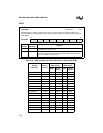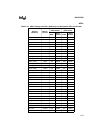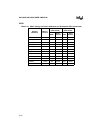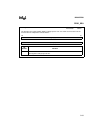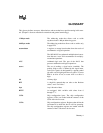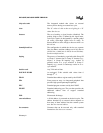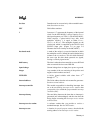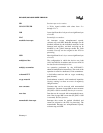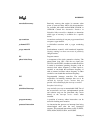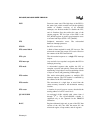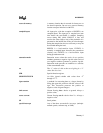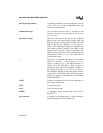
Glossary-2
8XC196NP, 80C196NU USER’S MANUAL
chip-select unit The integrated module that selects an external
memory device during an external bus cycle.
clear The “0” value of a bit or the act of giving it a “0”
value. See also set.
deassert The act of making a signal inactive (disabled). The
polarity (high or low) is defined by the signal name.
Active-low signals are designated by a pound symbol
(#) suffix; active-high signals have no suffix. To
deassert RD# is to drive it high; to deassert ALE is to
drive it low.
demultiplexed bus The configuration in which the device uses separate
lines for address and data (address on A19:0; data on
AD15:0 for a 16-bit bus or AD7:0 for an 8-bit bus).
See also multiplexed bus.
doping The process of introducing a periodic table Group III
or Group V element into a Group IV element (e.g.,
silicon). A Group III impurity (e.g., indium or
gallium) results in a p-type material. A Group V
impurity (e.g., arsenic or antimony) results in an n-
type material.
double-word Any 32-bit unit of data.
DOUBLE-WORD An unsigned, 32-bit variable with values from 0
through 2
32
–1.
EDAR Extended data address register used by the EPORT.
EPA Event processor array. An integrated peripheral that
provides high-speed input/output capability.
EPC Extended program counter used by the EPORT.
EPORT Extended addressing port. The port that provides the
additional address lines to support extended
addressing.
ESD Electrostatic discharge.
external address A 20-bit address is presented on the device pins. The
address decoded by an external device depends on
how many of these address lines the external system
uses. See also internal address.
far constants Constants that can be accessed only with extended
instructions. See also near constants.



